- Author Jason Gerald [email protected].
- Public 2024-01-15 08:07.
- Last modified 2025-01-23 12:04.
This wikiHow teaches you how to defragment the hard drive on any version of Windows computer.
Step
Method 1 of 5: Windows 10
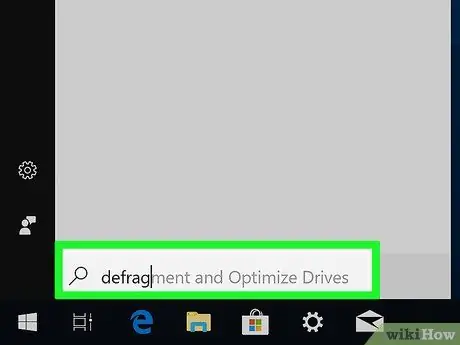
Step 1. Type defrag in the Windows search field
If there is no search field to the right of the Start menu
click the circle or magnifying glass icon to open it.
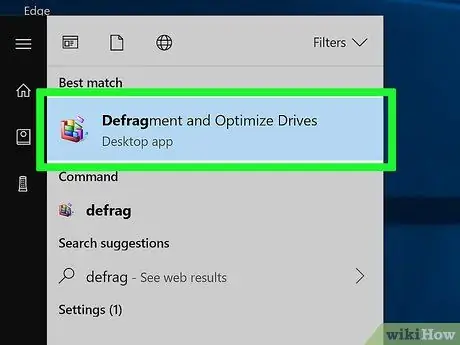
Step 2. Click Defragment and Optimize Drives
A list of drives connected to the computer will be displayed.
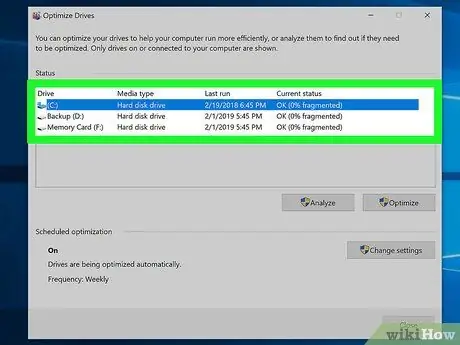
Step 3. Select the drive you want to defragment
If you only have one hard drive installed, that device will already be selected.
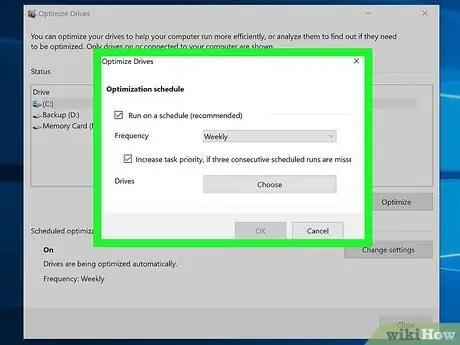
Step 4. Check the automatic defragmentation schedule
Windows 10 is set to defragment your computer's drives automatically at certain times. You can see the last defragmentation date under " Last run " at the top of the window.
- If defragmentation is set to run automatically, it says "On" under "Scheduled optimization" at the bottom of the window. The frequency (eg " Weekly ") will also be listed at the bottom.
- If this feature is not active and you want to activate it, click Change settings, then check the box " Run on a schedule (recommended) ". Select the frequency from the menu, then click OK.
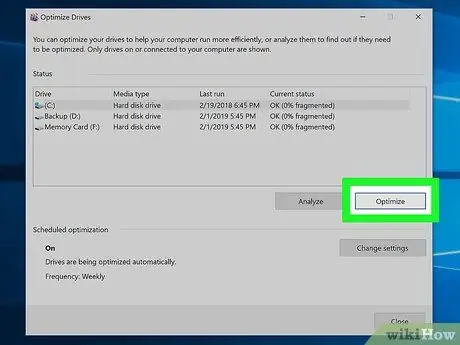
Step 5. Click Optimize if you still want to defragment the hard disk
The progress of the process will be displayed under the " Current status " column. After defragmentation is complete, the date under " Last run " will be filled with today's date and time.
The time it takes to defragment a hard disk depends on the size of the drive and the amount of fragmentation. Although you can continue to work while the process is in progress, your computer will run slowly if the defragmentation has not been completed
Method 2 of 5: Windows 8

Step 1. Point the mouse to the bottom right corner
Doing so will open the Charms bar.
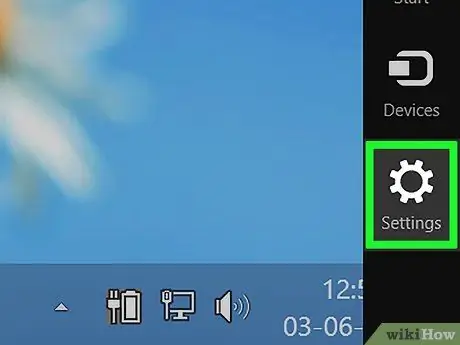
Step 2. Click Settings
This will open a menu.
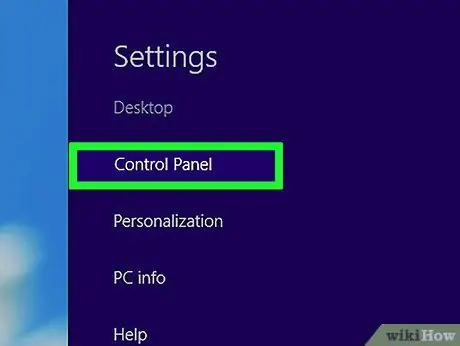
Step 3. Click Control Panel at the top of the menu
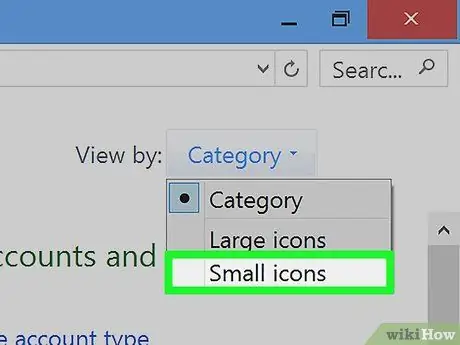
Step 4. Select Small icons in the "View by" menu
This option is in the top right corner.
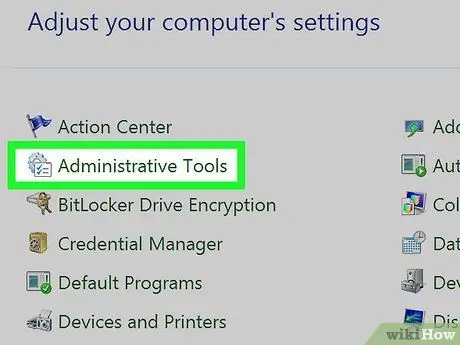
Step 5. Double-click Administrative Tools
A list of tools will open.
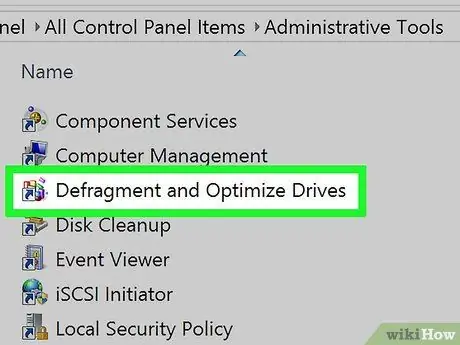
Step 6. Double-click Defragment and Optimize Drives
The " Optimize Drives " window will be opened.
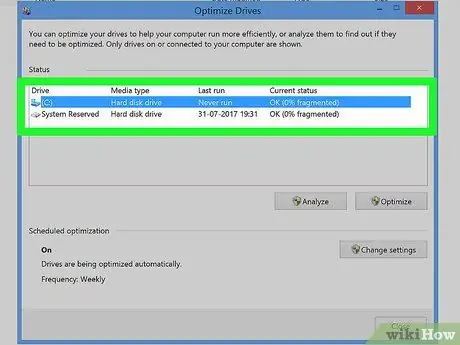
Step 7. Select the drive you want to defragment
If you only have one hard drive installed, that device will already be selected.
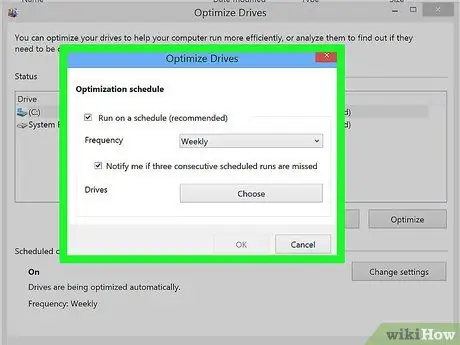
Step 8. Check the automatic defragmentation schedule
Windows 8 is set to defragment your computer's drives automatically at certain times. You can see the last defragmentation date under " Last run " at the top of the window.
- If defragmentation is set to run automatically, it says "On" under "Scheduled optimization" at the bottom of the window. The frequency (eg " Weekly ") will also be listed at the bottom.
- If this feature is not active and you want to activate it, click Change settings, then check the box " Run on a schedule (recommended) ". Select the frequency from the menu, then click OK.
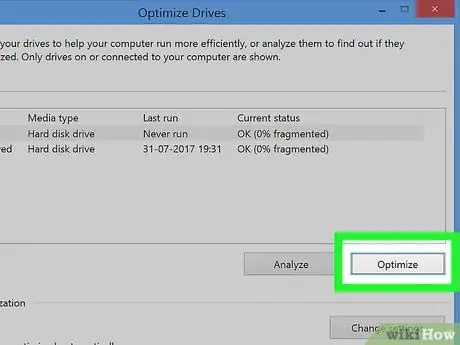
Step 9. Click Optimize if you still want to defragment the hard disk
The progress of the process will be displayed under the " Current status " column. After defragmentation is complete, the date under "Last run" will be filled with today's date and time.
The time it takes to defragment a hard disk depends on the size of the drive and the amount of fragmentation. Although you can continue to work while the process is in progress, your computer will run slowly if the defragmentation has not been completed
Method 3 of 5: Windows 7

Step 1. Click Start in the lower left corner
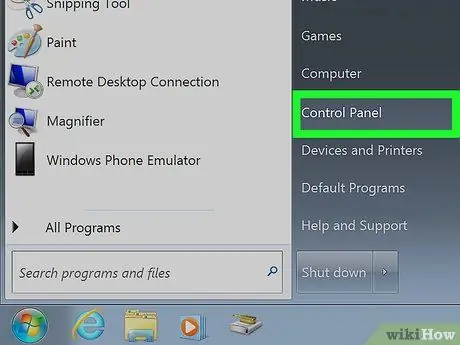
Step 2. Click Control Panel
This will bring up a window containing several icons.
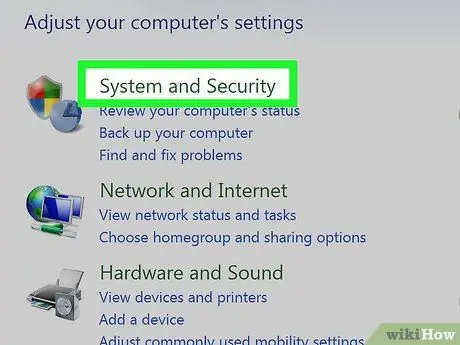
Step 3. Click System and Security
Some additional tools will be shown.
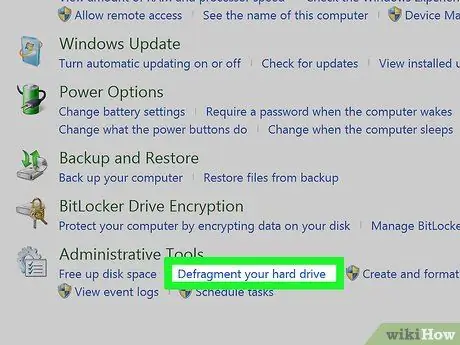
Step 4. Click Defragment your hard drive
This option is under "Administrative Tools". The "Disk Defragmenter" window will open.
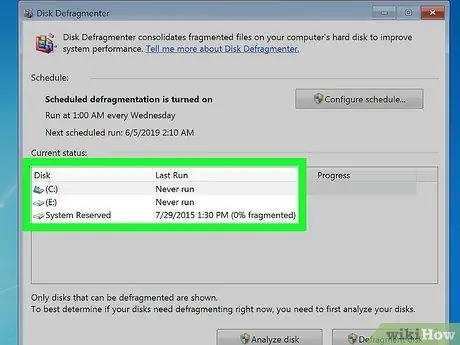
Step 5. Select the drive you want to defragment
If you only have one hard drive installed, that device will already be selected.

Step 6. Check the automatic defragmentation schedule
Windows 7 is set to defragment your computer's drives automatically at certain times. You can change the options as you wish.
- The last defragmentation date is listed in the " Last Run " column next to the drive name.
- If defragmentation is set to run automatically, " Scheduled defragmentation is turned on " will be displayed under " Schedule ". The date of the next scheduled defragmentation will also be listed next to "Next scheduled run".
- If you want to change the automatic defragmentation schedule, click the button Configure schedule, then set the desired schedule.
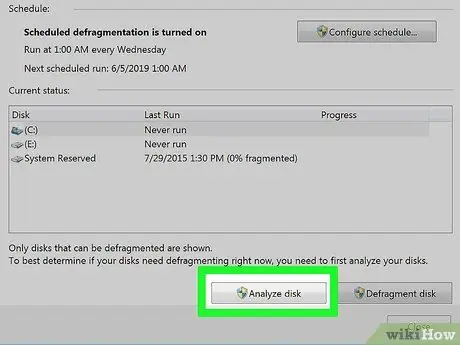
Step 7. Click Analyze to see if the hard disk needs to be defragmented
If the drive is not fragmented, you do not need to defragment it. If the drive is fragmented, a message will tell you that you should defragment it.
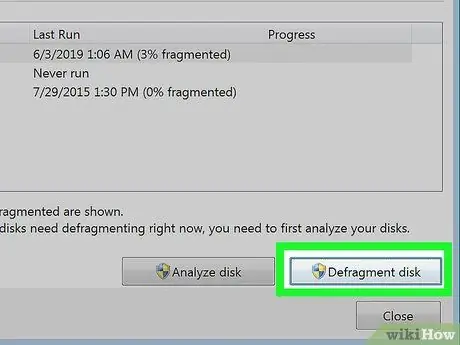
Step 8. Click Defragment disk
It's in the lower-right corner of the window. Doing so will start defragmenting the hard disk.
- The time it takes to defragment a hard disk depends on the size of the drive and the amount of fragmentation. Although you can continue to work while the process is in progress, your computer will run slowly if the defragmentation has not been completed.
- If you need to finish work when defragmentation has started and the computer's performance has become very poor, you can click Pause or Stop on the tool. Advantages of pressing the button Pause is that you can continue the defragmentation process where you stopped it. If pressing Stop, you must run the defragmentation from scratch.
Method 4 of 5: Windows Vista
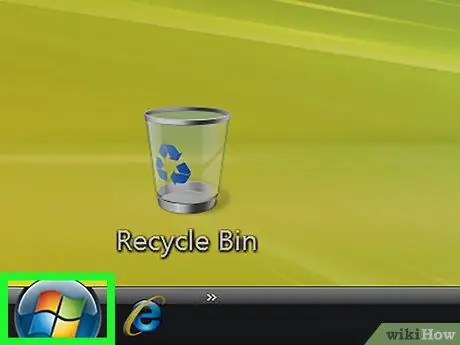
Step 1. Click Start in the lower left corner
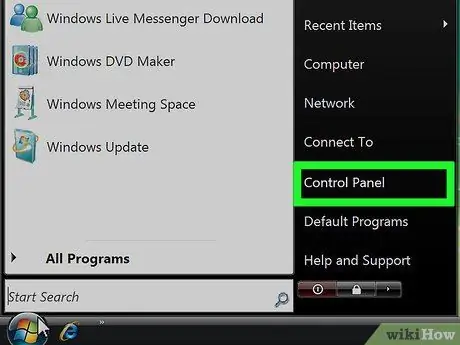
Step 2. Click Control Panel
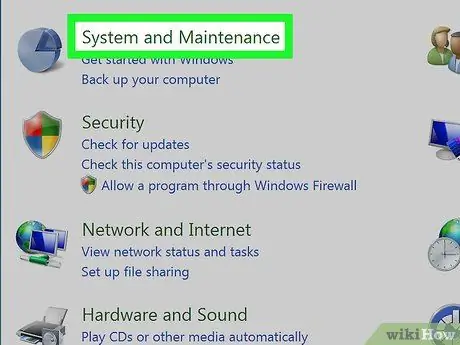
Step 3. Click System and Maintenance
This will bring up a list of tools.
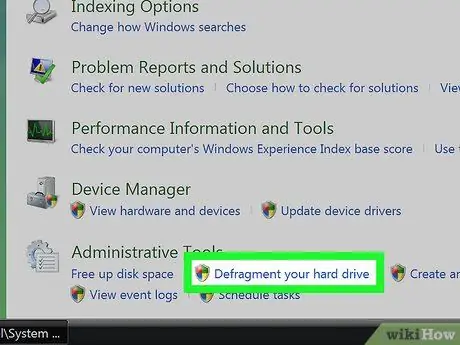
Step 4. Click on Defragment Your Hard Drive
This option is under "Administrative Tools". The "Disk Defragmenter" window will open.
Maybe you should click Continue to open the tool.
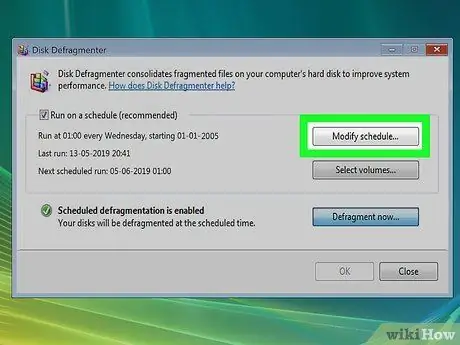
Step 5. Check the schedule
If Windows is set to defragment the drive automatically, the " Run on a schedule (recommended) " option will be checked. You will also see the schedule for the next defragmentation and the last date of defragmentation.
- If this option is not already active, check the box to enable it.
- If you want to schedule the defragmentation at a later time, click Modify schedule, then set the desired schedule.
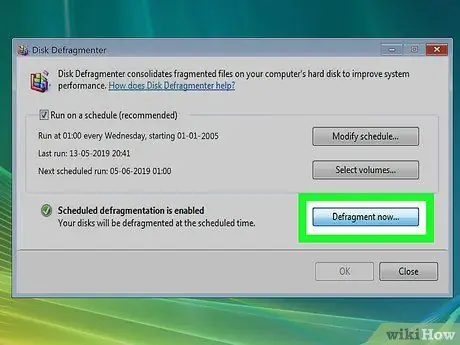
Step 6. Click Defragment now
This is the third button. A list of available drives on the computer will be displayed.
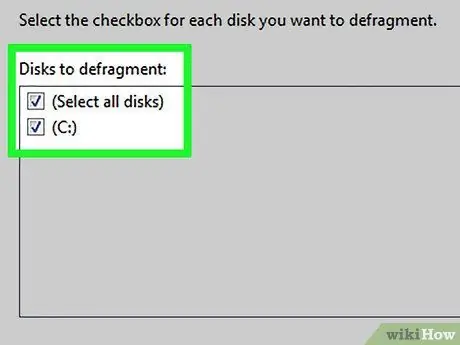
Step 7. Select the drive you want to defragment
If there is more than one drive, you can select all of them if you want-just check the "Select all disks" option at the top.
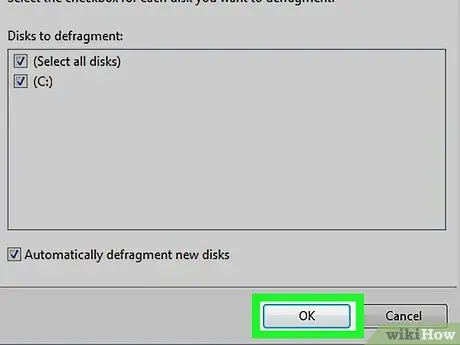
Step 8. Click OK
Windows will scan and defragment the selected drive. The progress of the process will be displayed in the lower left corner of the window.
- The time it takes to defragment a hard disk depends on the size of the drive and the amount of fragmentation. Although you can continue to work while the process is in progress, your computer will run slowly if the defragmentation has not been completed.
- If you need to finish work when defragmentation has started and the computer's performance has become very poor, you can click Cancel defragmentation.
Method 5 of 5: Windows XP
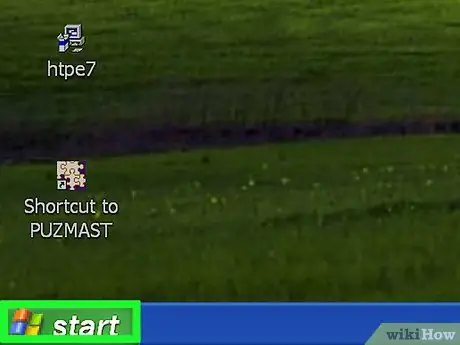
Step 1. Click Start in the lower left corner
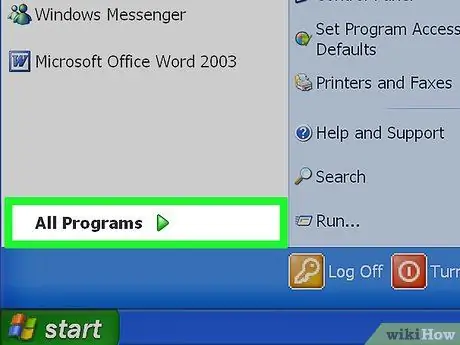
Step 2. Click Programs
A list of programs and folders will be displayed.

Step 3. Click Accessories

Step 4. Click System Tools
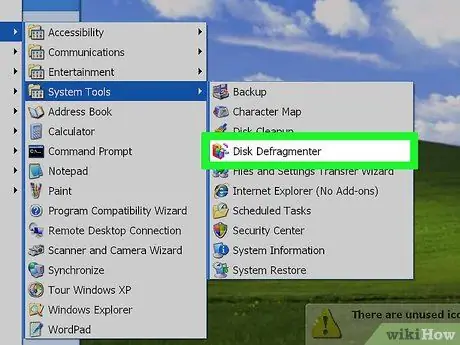
Step 5. Click Disk Defragmenter
The "Disk Defragmenter" window will be displayed.
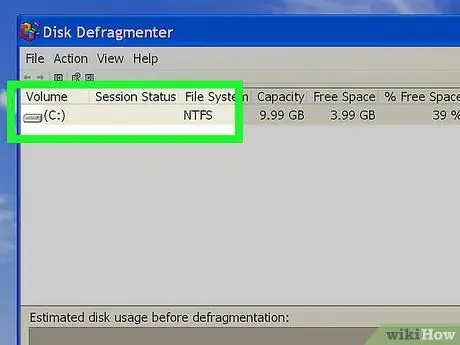
Step 6. Select the drive you want to defragment, then click Analyze
Windows will check the drive to see if defragmentation is necessary. When the analysis is complete, a message will appear telling you whether the drive needs to be defragmented.
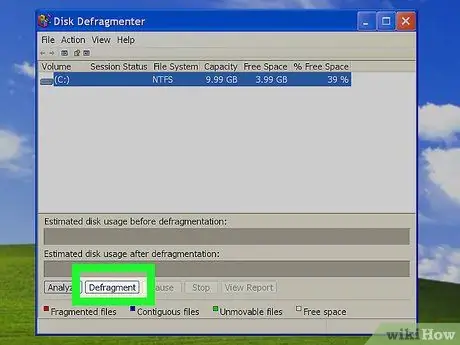
Step 7. Click Defragment when the computer suggests it
If the message says that the drive does not need to be defragmented, close the tool. If the message says "You should defragment this volume", click the button to start the defragmentation process.
- If you want to see a more complete report on the fragmentation, click View Report. Once you see the details, click defragment to run the process.
- The time it takes to defragment a hard disk depends on the size of the drive and the amount of fragmentation. Although you can continue to work while the process is in progress, your computer will run slowly if the defragmentation has not been completed.
- If you need to finish work when defragmentation has started and the computer's performance has become very poor, you can click Pause to pause it for a moment, or Cancel to stop the process completely. If pressing Pause, you can continue the defragmentation process where you press the button.
Tips
Perform defragmentation at night. If you've never defragmented before, or have saved a lot of files since you last defragmented your drive, the process could take hours
Warning
- The process of defragmenting a shared drive will have an impact on other users who are also using the drive.
- Do not defragment a solid state drive (SSD) type hard drive. This drive does not need to be defragmented, and will wear out quickly if you do. To override defragmentation, use the TRIM command which has a different purpose.






